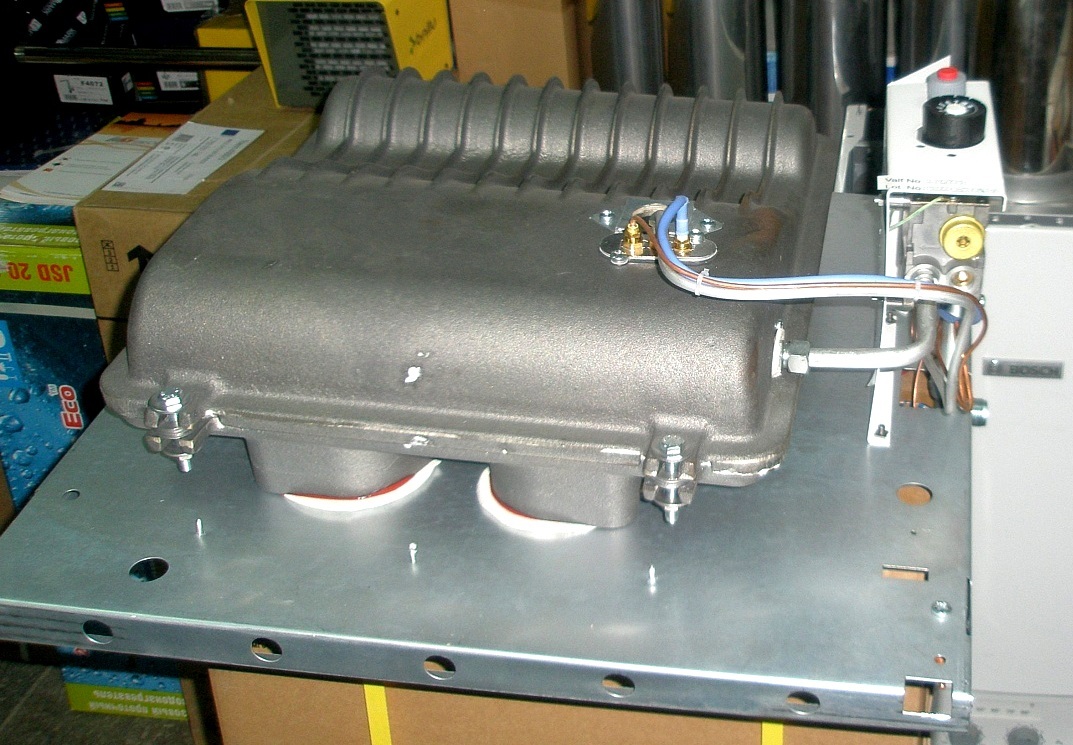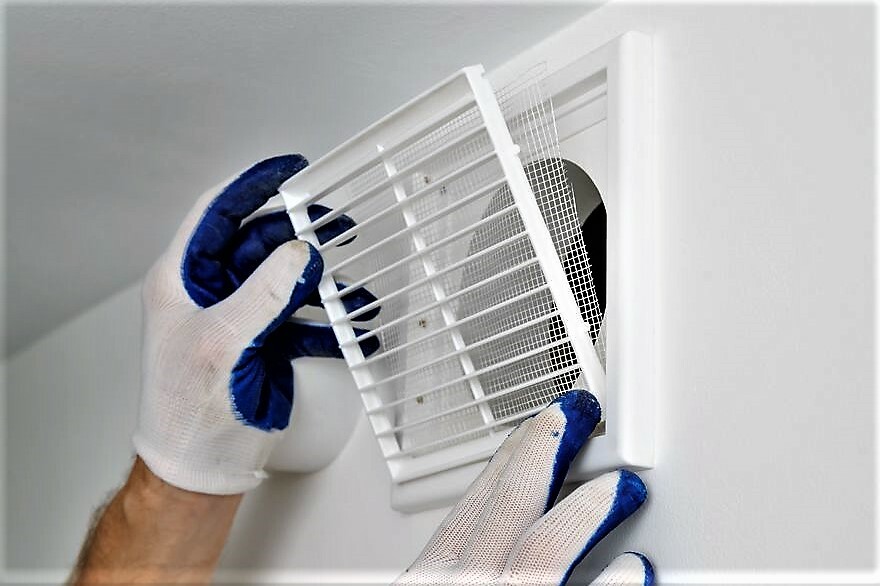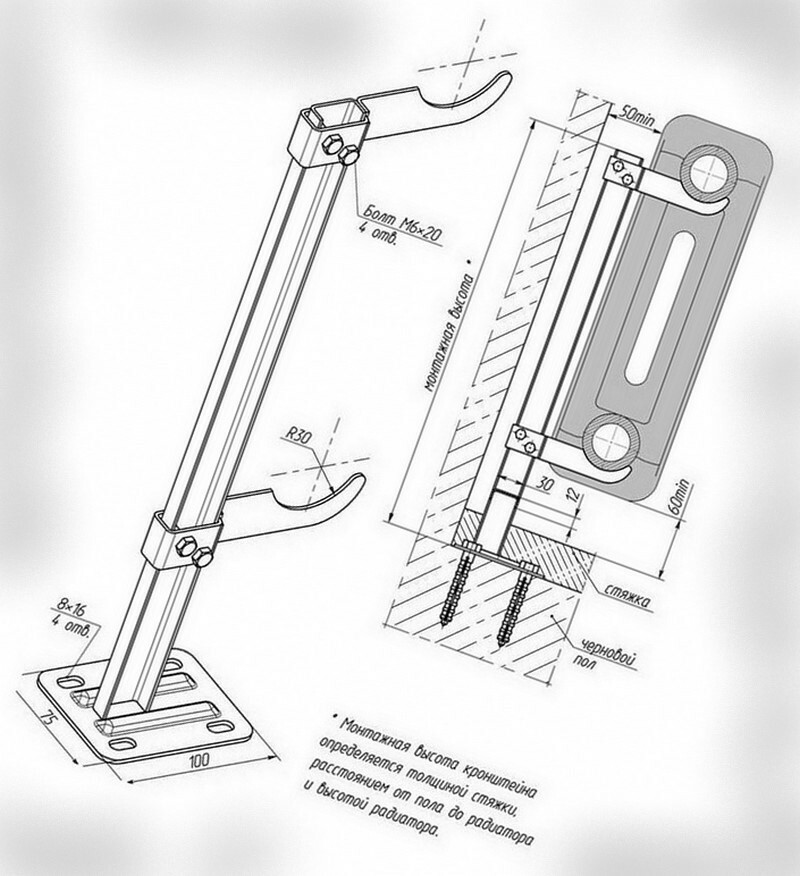Thanks to staining, heating batteries become more presentable and receive additional protection against corrosion. But the paint for heating radiators must be chosen correctly so that the renewed coverage lasts as long as possible.
We will help you in this matter. The article lists the requirements for enamels, describes the advantages and disadvantages of different paints. And also provides an overview of companies whose paints and varnishes have proven wear resistance in practice.
The content of the article:
- Is it possible to paint batteries
- Enamel requirements
-
Select paintwork for radiator
- Option # 1: oil
- Option # 2: water dispersion (water-based)
- Option # 3: alkyd
- Option # 4: Silver
- Manufacturer Overview
- Conclusions and useful video on the topic
Is it possible to paint batteries
Painted old sturdy cast iron batteries problems should not arise. It is only necessary to correctly choose the paint for them. But with radiators made of aluminum or stainless steel, the situation is radically different.
Initially, they are painted in the factory by a powder method with heat treatment. On top of this paintwork, applying a new coat of paint at home is problematic.
The overwhelming majority of manufacturers of non-cast iron heaters consider unauthorized painting the surface of the battery as a reason for canceling the factory warranty.
Any damage or detachment of the paint layer on a newly purchased radiator is a manufacturing defect. Such equipment is subject to mandatory replacement. Warranty service has not been canceled.

Manufacturers of aluminum and steel radiators in the instructions for their products in a categorical form prohibit their additional coloring
Enamel paints after drying create a durable and monolithic layer on the surface, the air through which is not able to pass by definition.
If oxygen is left at least a small chance to seep through the lacquer paint, then you can immediately forget about protecting the metal from corrosion. And protective functions are often the main reason for painting radiators.
At the same time in the passports for all radiators there is a categorical ban on painting the air outlet of the automatic air vent. If you paint on it, then the air, if necessary, from the heating system will be impossible to lower. For this moment, you must be sure to follow during the painting work.
Both aluminum and stainless steel are painted at the factories with powder dyeing compounds, which, after application, are “baked” in special boxes with a high temperature. It’s impossible to create the necessary conditions at home.
And usual oil and other paints do not last long on such radiators. Due to low adhesion, they will inevitably peel off from aluminum and steel surfaces.

If the paint on the aluminum battery began to crawl, then it is easier to buy a new radiator - the paint and varnish layer applied at home can last for a maximum of two to three years.
Reliable aluminum staining requires special painting equipment, as well as epoxy primers and enamels. All this costs a lot of money.
In addition, the slightest failure to comply with the technology inevitably leads to flaking of the applied coating. There is another option with anodic oxidation, but this is again technologically difficult and requires some knowledge.
If there is a successful experience in painting the car body and the corresponding paints and varnishes, then for painting aluminum battery you can take, otherwise you should not do it. It is better to purchase a new heating device or simply close the peeling off decorative screen.
A separate topic is convectors with a special fins strung on a pair of pipes from steel plates (“comb”). Such batteries were often installed in 1970–80s in panel high-rise buildings. Paint yourself lamellar ribs can not. This will lead to a sharp decrease in heat transfer.
At the same time to get to the pipes in the middle also will not work even with the help of a very narrow brush. These surfaces are best left alone.
On such radiators there are usually dampers and decorative screens from iron. Here they can and should be painted to give them an aesthetic look. Here come the usual heat-resistant paint.
Enamel requirements
The main thing in choosing a paint for a home radiator is its heat resistance. If the labeling banks indicated that the composition has an operating temperature below + 80 ° C, then you should not take such paintwork materials for painting the battery.
Conventional paints and varnishes were not originally intended for painting the heated elements of the heating system. After turning on the heating, they will begin to flake off or turn yellow.

The best battery paint version is the one on the label of which there are inscriptions “designed for radiators” and “quick-drying”.
Paint for self-coloring of the heater must be at the same time:
- heat resistant - at least + 80 ° С, and better than + 100 ° С;
- moisture resistant and resistant to abrasion;
- non-toxic;
- with high thermal conductivity;
- quick-drying.
Some inexperience for batteries choose the usual non-heat-resistant paint for interiors. As a result, when the heat is applied, it turns yellow or changes its original shade.
This is due to the presence of chalk or polymers in its composition, which are not designed for high temperatures. Therefore, both the bonding material and the pigment must be heat resistant.
The paint on the battery is usually applied in two layers. The faster each of them dries, the faster the radiator will be ready for operation. At the same time, the faster the paint is drying, the more pungent the composition is.
In order for the family not to be forced to inhale these outlets, it is often easier to remove the heater from the pipes and paint it somewhere in the garage or on the street.

As a filler, inexpensive chalk is often added to the paint to reduce its cost. It is better to refuse such paintwork materials immediately - such enamel will surely turn yellow.
Choosing between the glossy and matte version, it should be remembered that the slightest unevenness is noticeable on the shiny surface. For rough and uneven cast-iron batteries, it is better to choose a paint with a dull shade that will not give glare from lighting.
On radiator cast iron, there are often drips of metal and vyshcherblin. When using glossy enamel, they will all be visible.
In this case, too zealous with the alignment of the iron surface of the battery with sandpaper before painting is also not worth it. This can lead to thinning of the radiator fins and the appearance of a fistula.
Select paintwork for radiator
With the selection options everything seems to be clear. Now it remains to understand what kind of paint is better to paint the heating batteries in an apartment or a private house.
There are a lot of varieties of paintwork materials. Plus, the market has a huge number of manufacturers of various enamels. Choose the right paint material is often not easy.

The battery can always be painted with the help of car enamels in aerosol cans - they were originally intended for application to metal and are designed for high temperatures.
Heat-resistant paints for heating radiators from cast iron are:
- oil based on vegetable oils and linseed oil;
- water emulsion (acrylic);
- alkyd.
Plus there is a silver and hammer paint. Each of these options has its own set of advantages. Choose should be thoughtful.
Option # 1: oil
Previously, oil paints for dyeing batteries were used everywhere. They are usually made on the basis of organic linseed oil and do not bite on price. After their application and drying on the radiator, a coating that is sufficiently resistant to elevated temperatures, mechanical stress and moisture is formed.

The main advantage of oil paints is the cheapness of paintwork material, but they also have a whole heap of serious flaws, due to which they are used now less and less
Among the negative aspects of the use of oil (oil) paint can be called:
- Unpleasant smell - sharp "aroma" when performing painting and drying.
- The fragility of coverage - Repaint the battery will have every two or three years.
- The large thickness of the paint layer - as a result, a decrease in heat transfer from the radiator.
- Drying time - depending on the temperature in the room, the drying time may take up to 2 days.
- Probability of formation of stains, especially in case of non-compliance with the application technology.
If you take the oil paint is not heat-resistant, but normal, then it is unlikely to survive even one heating season. The coating of it on the battery will immediately crack as the temperature rises.
Paint on the basis of drying oil is better to use only as a last resort, when there is simply nothing else for sale, or when the heating battery needs to be painted cheaply only for one season.
Option # 2: water dispersion (water-based)
These paints are based on PVA or polyacrylates. The first to take for painting radiators is not worth it. They have low resistance to moisture. They are intended exclusively for interior painting of walls and ceilings.
For metal, which may have to put wet mittens for drying, such paintwork materials are not suitable categorically. They will immediately be erased from the surface of the heater.

If water dispersion paint is selected for the battery, then it must be acrylic (based on polyacrylates) and marked “for radiators”
Heat-resistant acrylic enamels for radiators have the following advantages:
- dry quickly;
- form a durable coating;
- do not have a strong odor;
- resistant to abrasion.
Most water based paints are available in white. To give them the desired shade, the composition must add the appropriate color. The coating formed with their help resembles plastic with a slight sheen. It is easy to clean and does not crack.
Option # 3: alkyd
Paints based on alkyd resin are superior to the first two options in heat resistance and resistance to water and detergents. This is the most practical and optimal choice for battery painting.
But most of the enamels represented in stores are not suitable for radiators. Choose a heat-resistant composition here should be as careful as possible.

Alkyd paint with titanium white as a pigment is, albeit expensive, but the most ideal material for painting a cast iron battery and steel heating pipes
Depending on the solvents and modifying additives present in the composition, this enamel is divided into many varieties. Of all it is necessary to allocate organic and silicone type. The first paint has a strong odor, and the second - high heat resistance.
Silicone alkyd paints based on polyorganosiloxane polymers are used to paint not only batteries, but also stoves, chimneys, boilers and fireplaces. There are no salts in it, which begin to crystallize when heated, thereby reducing the strength of the paint layer.
This enamel easily tolerates temperatures up to + 600 ° C. However, when using it, it is necessary to take care of high-quality ventilation of the room. When drying, it releases toxic fumes, so it is best to do paint work outside.
Option # 4: Silver
If the white color is not mandatory, then you can also use the good old silverfish. It is aluminum powder mixed with thinner and bituminous varnish. At the same time, it is not worthwhile to take ready-made paints (for example, BT-177), which do not differ in heat resistance by definition.
It is best to prepare the silver piece yourself from PAP-1 powder and BT-577 varnish. By mixing them in the right proportions, you can get a paint designed for temperatures of 300–400 ° C.
It is only necessary to observe the ratio of the components prescribed in the instructions for the preparation of this composition. Such a coating on the radiator will last more than one year.
Manufacturer Overview
Heat-resistant paints and varnishes are available for painting heating systems, both imported and domestic. Both those and others are quite suitable for coloring the battery in the cottage or apartment.
Among the major manufacturing companies can be mentioned:
- Scandinavian TIKKURILA with the “Termal” series.
- German DUFA Thermo and Aqua-Heizkorperlack series.
- Russian TEX with special "enamel for radiators".
- Polish SNIEZKA.
- Slovenian BELINKA.
- Russian LAKRA.
There are many options with different prices and composition, there are plenty to choose from. Moreover, choosing a primer for paint, it is best to opt for the products of one manufacturer. Experimenting with the mix of what is cheaper is not worth it.
An overview of popular thermal paints that are used to paint radiators, metal furnaces and other elements of the heating circuit is given in this article.
Conclusions and useful video on the topic
Choose enamel for painting the cast iron radiator is easy, you just need to carefully look at the label. And the selection of videos below will definitely help you navigate the existing varieties of heat-resistant radiator paints.
Rules for choosing enamel for radiators:
How to properly paint a cast iron radiator:
What enamel should paint batteries:
It is not worth to paint the first radiator of the first paint on the eyes. For these purposes, you should choose a special heat-resistant enamel.
If you take the usual paintwork material, the coating of it when the battery heats up quickly will become unusable. Also, when choosing, it is necessary to look, so that among the components there is no chalk, turning yellow when heated.
Looking for quality paint for radiators? Or have experience using heat-resistant enamels? Please leave comments on the article, ask questions and participate in the discussion of the material.


